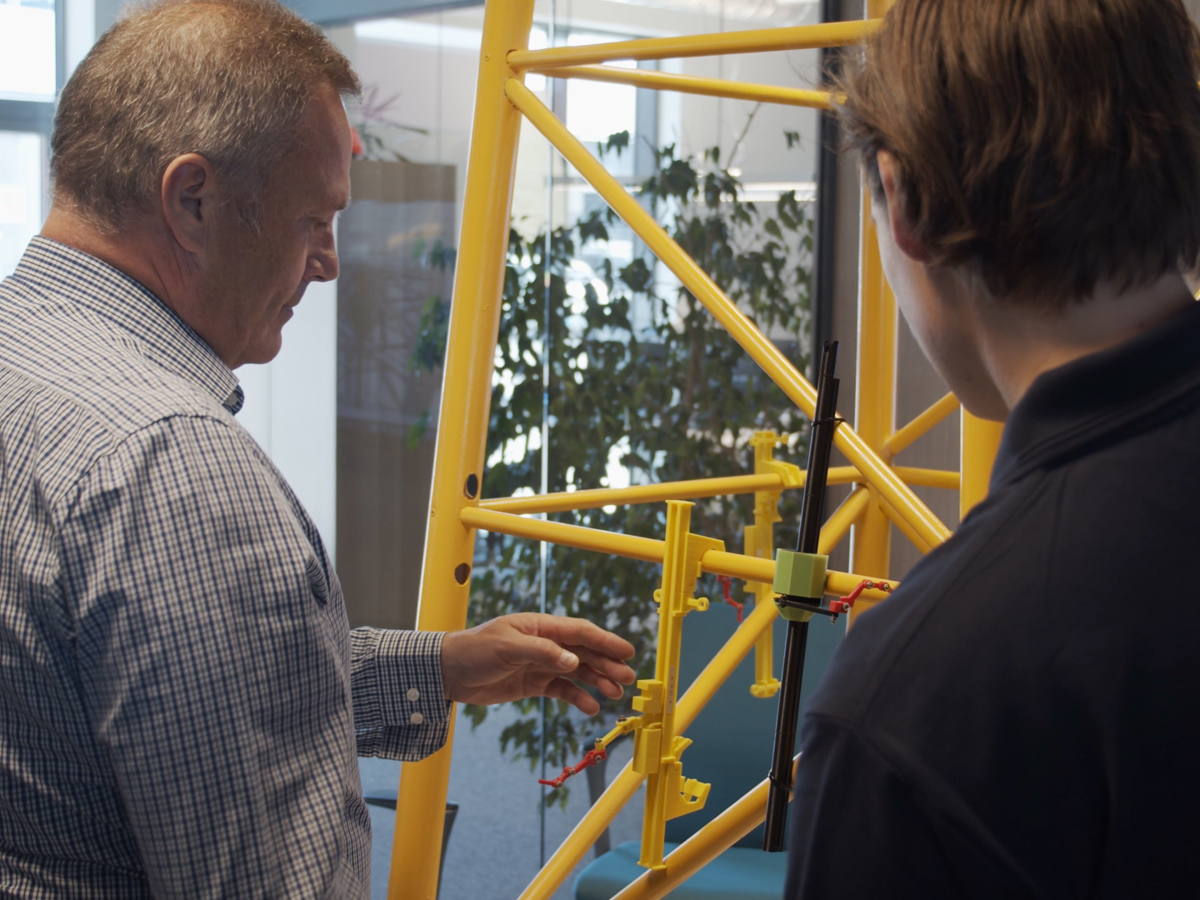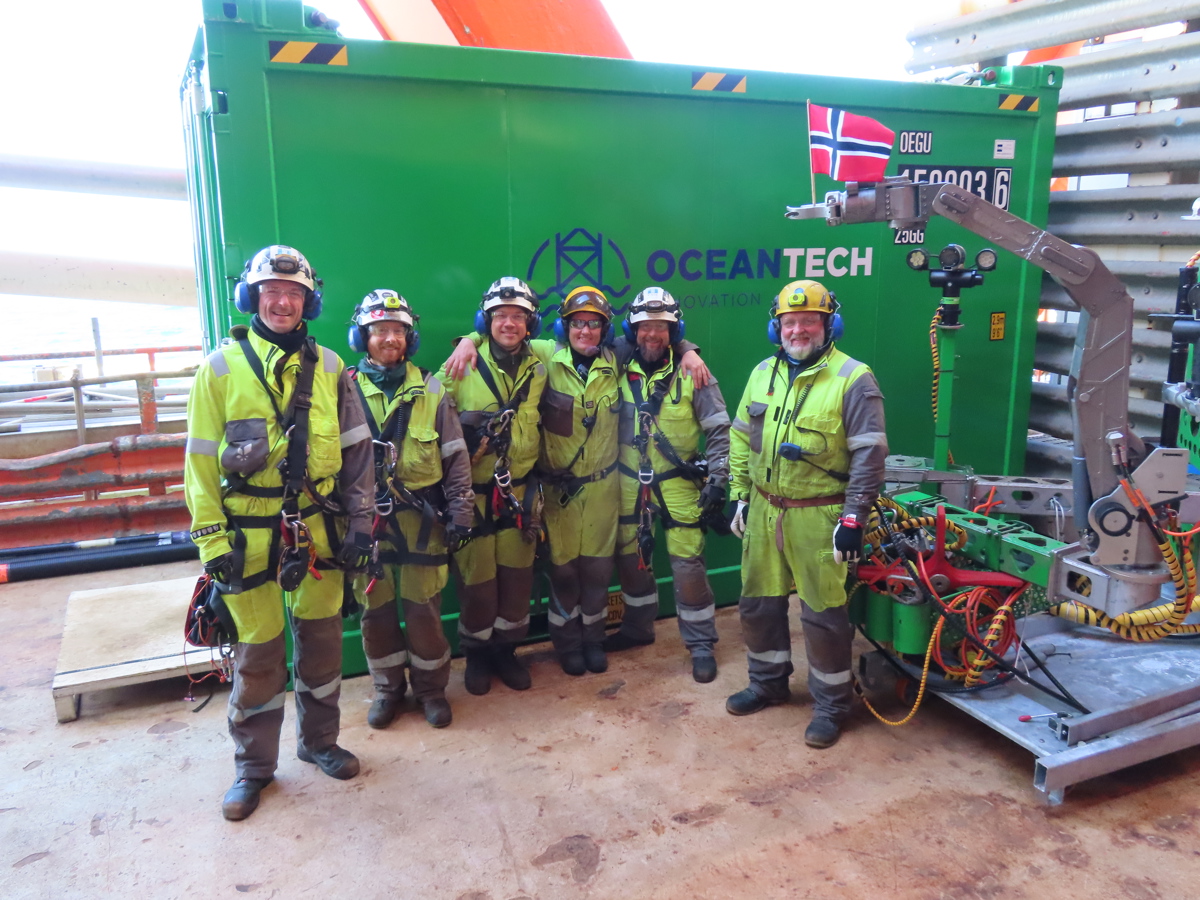Replacing riser protection nets on offshore installations, particularly in harsh environments like the North Sea, is a complex operation due to the need to secure nets without compromising riser integrity, ensure precise alignment and tensioning to withstand operational loads, and maintain compatibility with existing infrastructure.
Riser protection nets endure significant forces, and their replacement is unfeasible using traditional methods such as ROVs or divers. These projects require robotic solutions with specialised tooling, highly skilled personnel, and meticulous planning and testing onshore to ensure safe and efficient execution offshore.
By involving OceanTech from the outset, we are able to conduct feasibility studies, refine access methods, optimise equipment and tools, and test techniques and equipment under realistic conditions at our Subsea Test Centre in Trondheim. For offshore operators, this ensures an optimal problem-solution fit, seamless execution with minimal handovers, and substantial time and cost savings.
Here are some of the factors we consider in the feasibility phase of riser protection net replacement projects:
- Materials and components
- Net design optimisation
- Environmental considerations
- Installation method, equipment and tooling
- Safety considerations
- Logistical constraints
Materials and components
The design and material selection for nets and ropes are crucial to ensuring the long-term durability and effectiveness of riser protection systems. Materials must be chosen to handle dynamic loads from wave action, currents, and potential impacts, while also withstanding harsh environmental conditions.
For horizontal main ropes, wing ropes, and tie-back lines, polyester with a polyurethane (PU) coating can be a reliable choice, offering durability and resistance to environmental wear. Vertical ropes are commonly made from high-modulus polyethylene (HMPE), valued for its strength, low stretch, and abrasion resistance.
Equally important are the components supporting the ropes, such as bend shoes, rope guides, tensioners, rope anchors, and protection frames. These components must be assessed, and possibly replaced, to address wear, redirect forces, and keep ropes properly aligned––preventing unnecessary stress and extending the system's life.
In the feasibility phase of riser protection net projects, we identify damaged components, determine areas requiring further investigation, and propose optimised designs when necessary.
Environmental considerations
Replacing riser protection nets requires careful attention to environmental impact. Materials used should be non-toxic, corrosion-resistant, and designed to minimise harm to marine ecosystems. Removing old nets should also be handled responsibly to avoid debris entering the ocean, and ensure proper disposal or recycling of materials.
Seabird protection may also be necessary to prevent nesting. In such cases, custom-designed deterrents—such as barriers or netting—may need to be installed at critical points, including tensioner brackets.
In general, operations should align with environmental regulations, be compatible with site-specific constraints, and minimise ecological impact.
Read more: How does OceanTech ensure compliance with HSE standards?
Installation method, equipment and tooling
Determining how to safely and effectively install riser protection nets, while minimising risks to risers, infrastructure and personnel, is perhaps the most critical factor in the feasibility phase. Traditional methods, such as ROVs or divers, are not suitable options. At OceanTech, we use specialised robotic solutions to ensure efficiency and safety. Our remotely operated vertical access tool (VAT), securely mounted on a rail system fixed to the platform, enables robotic arms and tooling to be accurately guided into the splash zone, ensuring reliable operation in most weather conditions.
- In the feasibility phase, we ask ourselves several questions related to installation method, equipment and tooling:
- Are rope protection frames and rope guides adequately designed to protect ropes from wear?
- What is the condition of the anchors? Do they need to be modified or replaced?
- What cutting and removal methods should be used for decommissioning existing components?
- What equipment and tooling are required to ensure precise and safe installation? Is a temporary lifting structure required?
- How will the installation sequence and deck-level assembly be managed? What components can be preassembled at deck level to streamline installation?
Safety considerations
Safety is another important factor in the feasibility phase of riser protection net replacement projects. Risks such as dropped objects, personnel exposure in hazardous zones, and the potential for tool malfunctions, should be carefully assessed in advance. Careful planning of tools, methods and contingencies, combined with robust HSE protocols, ensures safe project execution.
At OceanTech, we are dedicated to conducting our operations without causing accidents or damages. Our robots and tooling are operated from the topside, enabling unmanned operations near structures in the splash zone. This significantly enhances operational safety. We have proudly achieved over 200,000 incident-free offshore work hours, demonstrating the reliability of our technology.
Read more: How does OceanTech ensure compliance with HSE standards?
In addition to our technology, our strong safety record is attributed to several other factors, including effective work methods, extensive experience, and real-time monitoring capabilities.
Logistical constraints
Lastly, careful planning to address potential issues related to mobilisation onshore, personnel on board (POB) limitations, equipment transportation, customs clearances, and potential supply chain disruptions must be factored into timelines to prevent delays.
Read more: Why partner with OceanTech in the design and engineering phase?
OceanTech’s equipment and tooling are lightweight and deployed from the platform with specialised rigging techniques. This allows small crews of 4–6 platform-based personnel to perform tasks that diving teams or expensive ROVs struggle with or cannot complete.
Our standard suite consists of three main units: a hydraulic power unit, a control cabin or suitcase, and splash zone tools. Most equipment is transported and installed by our personnel. We may require crane crew support during onloading, but once our equipment is unloaded and installed, we have no further need for support during operations.
By addressing possible logistical constraints in the feasibility phase, we ensure smooth project execution, and significant time and cost savings for operators while maintaining safety and operational efficiency




